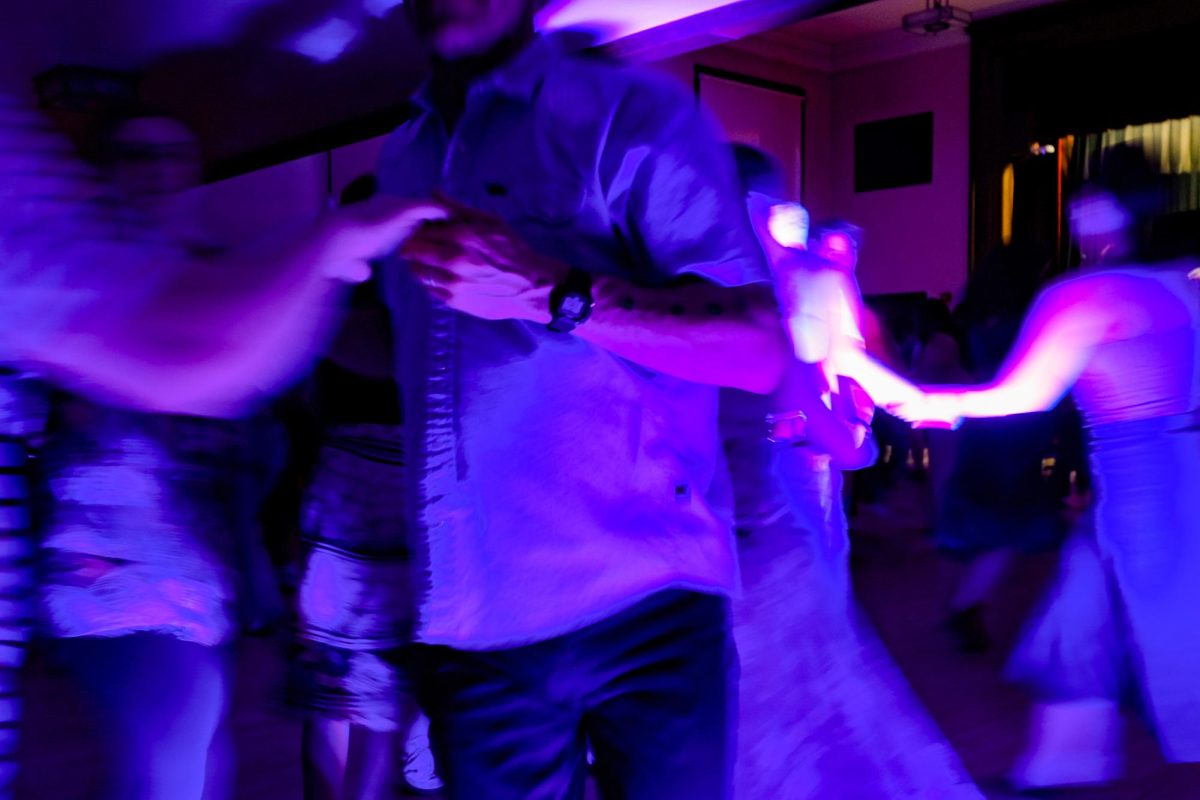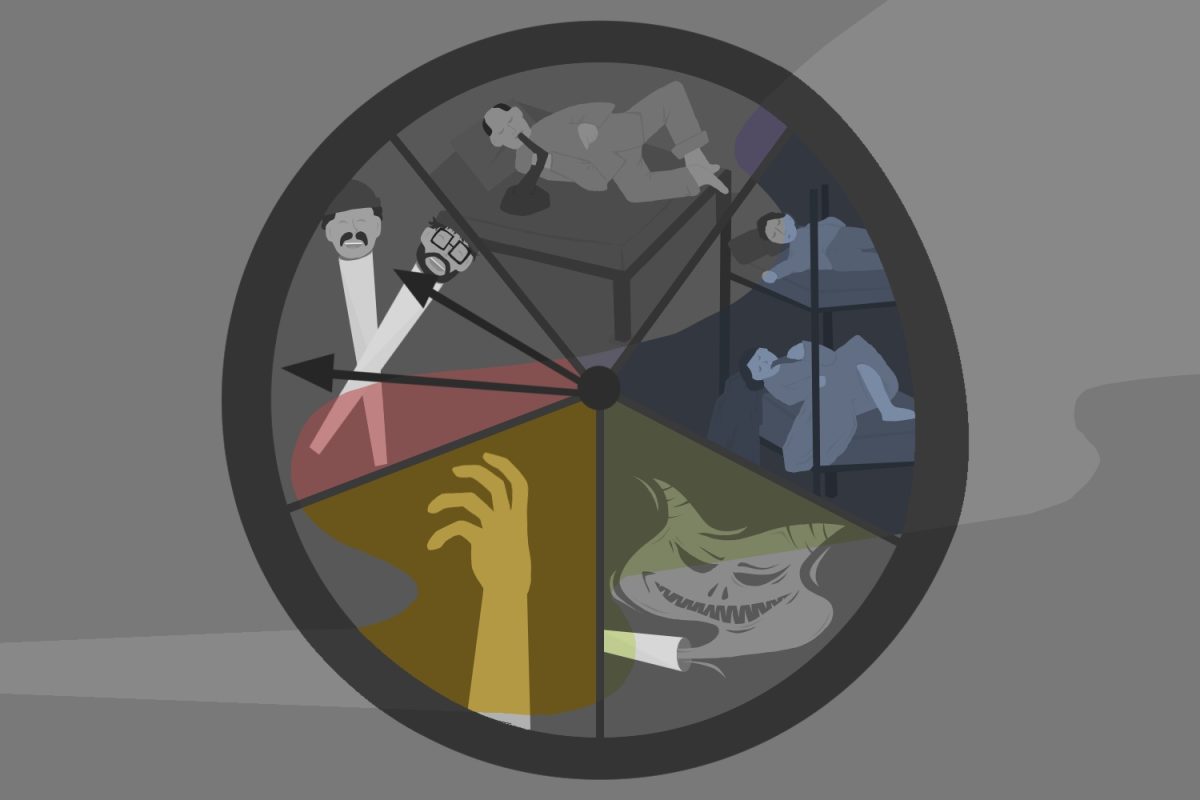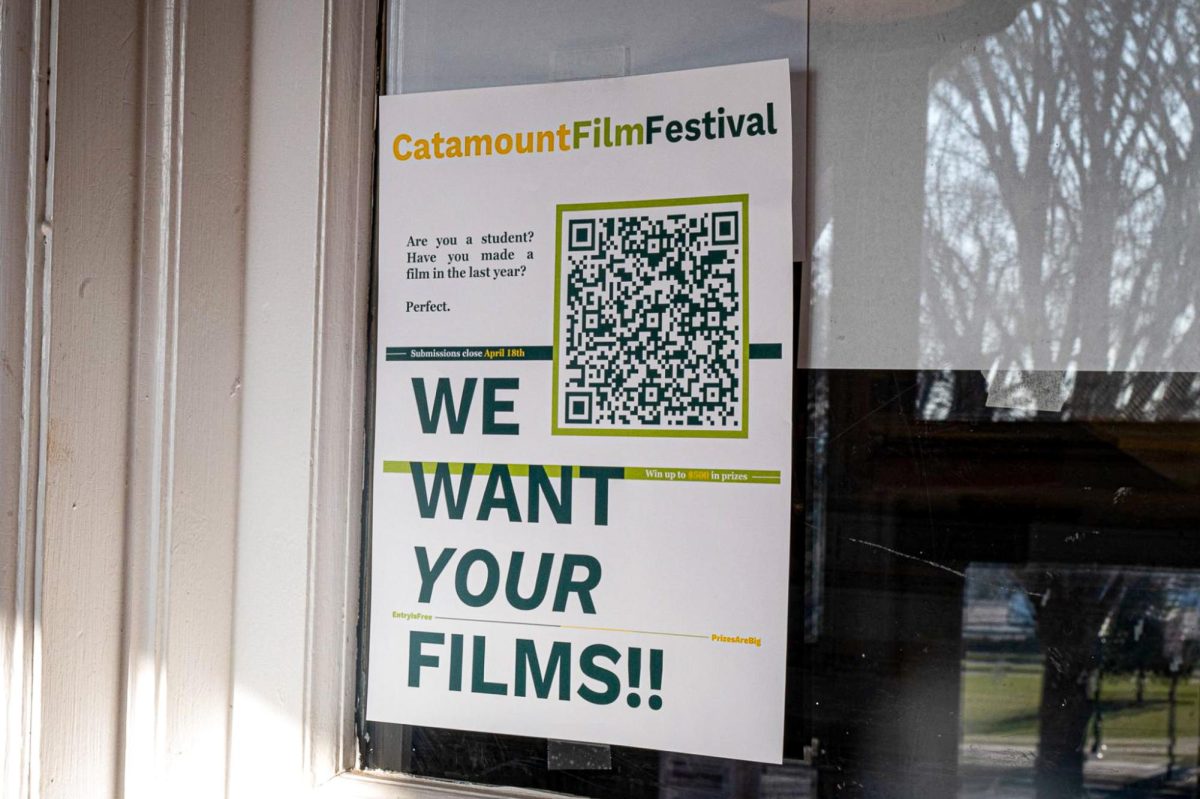Mann Hall shined as rainbow strobe lights bounced off the equally colorful attire of the people filling the room.
Adorned with glitter and glow-in-the-dark face paint, many attendees left their shoes at the door — their bare feet stomping in unison to the fiddle’s upbeat tempo.
The scene played out at UVM Contra Club’s glow-themed dance on Saturday, March 22.
Characterized by jubilant live music and structured steps led by a “caller,” contra dancing is a traditional partner folk dance dating back to 17th-century England and Scotland.
In a time where an epidemic of isolation runs rampant, contra dancing fosters a unique kinship through touch, which the UVM Contra club wants to cultivate on campus.
“There are very few situations where you’re physically that close with anybody else. It’s a special kind of experience to dance with someone, […] and have it be a wonderful experience,” said sophomore Lisa Edmonston, self-described official email sender for the club.
Shut down in 2020 due to COVID-19, UVM Contra exploded in popularity after re-emerging and hosting its first dance last spring.
“We were surprised how people took to contra, especially people who had no idea what was going on,” said senior Maia Mencucci, treasurer for UVM Contra. “But it was really encouraging.”
As community support grew over the past year, the club expanded, hiring more bands and callers to lead more events.
“Within the next few months, we booked four more dances,” said junior Casey Seem, the club’s president. “We realized that we could be doing this as a regular thing, and that was really exciting.”
Part of the initial appeal of the recent revival was contra dancing’s antiquity. Many of the dances and tunes have remained the same over time, Seem said, and people are drawn to contra dancing as a longstanding piece of folk culture.
Coinciding with its renewed interest, modern contra dancing is rapidly evolving. UVM Contra adds its spin by exploring new themes, like their “Fish Formal,” jean-themed “jontra” and spooky dance for Halloween.
Additionally, the club most recently collaborated with the band “Chaos Set” and their self-labeled “electric contra” — a sub-genre of contra music that blends traditional folk melodies with more contemporary instruments like the electric guitar and saxophone.
“There’s lots of room for innovation within contra dancing,” said junior Katrina Tracy, director of fine tuning for the club. “We had an avian dance and a whale dance in the fall […] at jean contra, you’re not just dancing, you’re wearing all denim, and our last dance was ‘glow.’ It’s innovative, like a piece of art.”
Traditionally, contra was done under a strict gender binary, where partners were referred to as “ladies and gents.”
Now, many callers nationwide have adopted terminologies that are more inclusive of gender nonconforming participants. At UVM Contra events, partners are called “robins and larks,” where the “r” and the “l” denote which direction to turn.
“It’s very inviting to know that you can dance in either role,” said sophomore Sadie Dow, the club’s social media manager. “The whole environment is very comfortable for new people.”
Indeed, the club officers emphasize that welcoming camaraderie is the essence of their events.
“It’s a collaborative experience for the goal of having fun,” said Mencucci. “Even if you don’t know each other’s names, you’re doing this beautiful thing together, and that’s just really special.”
As this community continues to grow, UVM Contra aims to continue to celebrate the tradition of contra dancing and make it inviting for all.
“It’s an honor to keep these traditions alive and keep it going with popular culture. There’s a part of the UVM community who wants to keep them going, and we’re going to do that,” said Mencucci.








